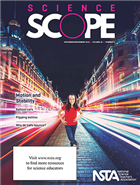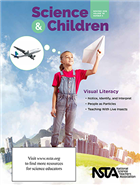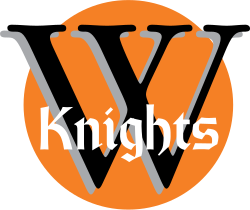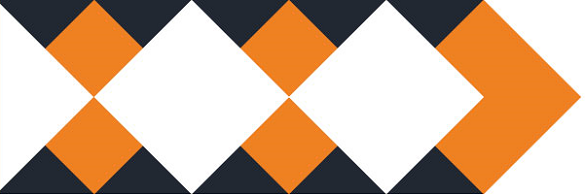As widely reported, the Democrats won the majority of seats in the U.S. House of Representatives which means some key changes ahead.
Education: House committee leadership positions will switch over at the start of the 116th Congress on January 3. It is widely expected that Rep. Bobby Scott (D-Va.), a 13-term congressman and the ranking member on the House Education and the Workforce Committee, will take over as chair. Scott was one of the main architects of the Every Student Succeeds Act (which comes up for reauthorization in 2019).
It is also expected that this committee will be renamed the “Committee on Education and Labor.”
Rep. Scott told POLITICO last week he is hopeful that Congress can pass a bipartisan bill to update the Higher Education Act. All eyes are also on the Democrats legislative agenda, particularly Rep. Scott’s infrastructure bill, the Rebuild America’s Schools Act, H.R. 2475 (115) which would create a $70 billion grant program and $30 billion tax credit bond program to improve school buildings in high-poverty schools and create a national database on the condition of public school facilities.
Rep. Nita Lowey (D-N.Y.) is expected to take charge of the House Appropriations Committee for Labor/HHS and Education. Challenges next year will include the threat of sequestration and significantly lowered spending caps, and a 5% across-the-board cut proposed by the Administration.
With the Democrats in charge, watch for new oversight power they will use to scrutinize the Department of Education, especially around ESSA and civil rights issues. But will it be Secretary DeVos testifying before the Congressional oversight committees? It is rumored that she is likely to be one of the cabinet secretaries expected to leave at the end of the year.
In the Senate: Sen. Lamar Alexander (R-TN) remains chair of the Senate HELP Committee and many anticipate the Senator will push to reauthorize the Higher Education Act (HEA) before his term is up in 2020.
Two election results of particular interest to the education community: Wisconsin Governor-elect Tony Evers (D) the Wisconsin state superintendent, defeated incumbent Governor Scott Walker and U.S. Representative-elect Jahana Hayes (D-CT) Hayes, the 2016 National Teacher of the Year, will be the first African-American woman to represent Connecticut in Congress.
For a deeper dive into election results check out the Education Commission of the States post-election resources include results every state across the country in their infographic, education leadership changes and key takeaways from state ballot issues.
Science: Several new scientists will join the 116th session of Congress. Reports the Washington Post, “The newcomers, mostly Democrats, include Chrissy Houlahan, who has a degree in industrial engineering and won in Pennsylvania. Sean Casten, who has worked as a biochemist, flipped a longtime Republican district in Chicago. Ocean engineer Joe Cunningham, who came out strongly against offshore drilling, won in South Carolina. Lauren Underwood, a registered nurse, won Illinois’s 14th District. In Virginia, Elaine Luria, who has a nuclear engineering background, defeated the Republican incumbent, Scott Taylor. Jeff Van Drew, who won a seat representing the 2nd Congressional District in New Jersey, is a dentist.” In addition, Pediatrician Kim Schrier won the race in Washington’s 8th District and Rep Kevin Hern, a Republican from Oklahoma, holds a bachelor’s degree in engineering.
Two incumbents–Rep. Bill Foster (D-Ill.), a former high-energy physicist at Fermilab, and Rep. Jerry McNerney (D-Calif.), who worked as an engineer and has a PhD in mathematics—kept their seats in Congress.
Shortly after the election Rep. Eddie Bernice Johnson (D-TX), issued a statement indicating she will seek to be chair of the House Science, Space, and Technology Committee in January. Johnson is currently ranking member of the committee. She vows to pursue an agenda that will:
- “Ensure that the United States remains the global leader in innovation, which will require attention to a wide range of activities: promoting effective STEM education solutions, engaging the underrepresented minorities and blue collar workers in the STEM fields, supporting a robust federally funded R&D enterprise and emerging areas of science and technology, defending the scientific enterprise from political and ideological attacks, and challenging misguided or harmful Administration actions;
- Address the challenge of climate change, starting with acknowledging it is real, seeking to understand what climate science is telling us, and working to understand the ways we can mitigate it; and finally,
- Restore the credibility of the Science Committee as a place where science is respected and recognized as a crucial input to good policymaking.”
For more on the new science face of Congress, read Business Insider’s article, Eight New Scientists Elected to the House and Senate and the Washington Post article, How Science Fared in the Midterm Election.
U.S. Department of Education Declares National STEM Day
The U.S. Department of Education declared November 8 to be National STEM Day. On that day they announced that it had surpassed President Trump’s directive to invest $200 million in high-quality science, technology, engineering, and mathematics (STEM) education. In total, the agency obligated $279 million in STEM discretionary funds in Fiscal Year 2018.
The Department also released the first ever data story on STEM, which explores both access to and enrollment in Algebra I in K-12 public schools using the 2015–16 Civil Rights Data Collection (CRDC).
The study shows that “80% of all eighth-grade students attend a school that offers Algebra I, but only 24% of these students are actually enrolled in the course. This “leak” in the STEM pipeline can have long-term effects on students’ education, since Algebra I is considered the gatekeeper course to advanced math and science coursework.”
Understanding ESSA Report Cards
And finally, last week Secretary DeVos released a guide to help parents understand the report cards that states and school districts are required to publish under the Every Student Succeeds Act, detailing school performance.
Stay tuned, and watch for more updates in future issues of NSTA Express.
Jodi Peterson is the Assistant Executive Director of Communication, Legislative & Public Affairs for the National Science Teachers Association (NSTA) and Chair of the STEM Education Coalition. Reach her via e-mail at jpeterson@nsta.org or via Twitter at @stemedadvocate.
The mission of NSTA is to promote excellence and innovation in science teaching and learning for all.
Follow NSTA



 Science Scope –
Science Scope – 


 I am hoping to have “word walls” in my classroom for subject areas. What would be some beneficial words no matter the age level for the science classroom? — H., Iowa
I am hoping to have “word walls” in my classroom for subject areas. What would be some beneficial words no matter the age level for the science classroom? — H., Iowa This month’s blogs feature questions sent to me by students of Michael D. Bechtel, EdD, assistant professor of science education, Biology Department of Wartburg College, Iowa. As part of their coursework they were asked to connect to professional learning communities and many of them found resources on the NSTA website – including this blog. Many thanks to Dr. Bechtel and the up-and-coming teachers of Wartburg College for their insightful questions!
This month’s blogs feature questions sent to me by students of Michael D. Bechtel, EdD, assistant professor of science education, Biology Department of Wartburg College, Iowa. As part of their coursework they were asked to connect to professional learning communities and many of them found resources on the NSTA website – including this blog. Many thanks to Dr. Bechtel and the up-and-coming teachers of Wartburg College for their insightful questions!
